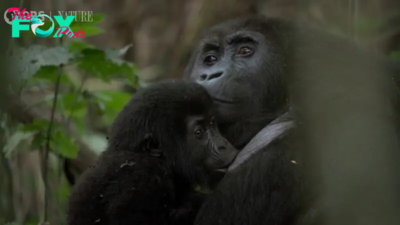Animals
Scientists accidentally find deep-sea 'jelly' creatures merged into 'single entity' after injury, revealing bizarre new behavior
Bizarre deep-sea creatures known as comb jellies can fuse together when they are injured, creating a single massive individual with permanently combined nervous systems and stomachs, a new study reveals. This unusual adaptation has never been seen before in any other species, researchers say.
The researchers discovered the fused jellies by accident in the lab.
"I was very excited [when I found them]," study lead author Kei Jokura, an evolutionary biologist at the University of Exeter in the U.K. and Japan's National Institutes of Natural Sciences in Okazaki, told Live Science in an email. "I immediately took the fused comb jellies from the room where I was keeping them and showed them to the other lab members."
Comb jellies, also known as ctenophores, are a group of more than 100 species of gelatinous, blob-like creatures with small, comb-like tentacles. These alien-looking animals, which appear similar to jellyfish, create luminous displays in the deep sea by lighting up specialized cells throughout their translucent bodies. They are often considered some of the most bizarre creatures in the deep sea and are believed to be one of humanity's most ancient ancestors.
In the new study, published Oct. 7 in the journal Current Biology, researchers describe how they were carrying out routine research on warty comb jellies (Mnemiopsis leidyi), also known as sea walnuts, when they discovered that one of their test subjects was missing from a tank in their laboratory. The team then noticed that one of the remaining jellies was unusually large. And upon closer inspection, they realized it was actually two intertwined individuals with "no apparent separation between them."
The researchers suspected that this fusion was a previously unknown adaptation triggered by both Animals sustaining injuries. To prove this, they attempted to replicate the fusion process by removing small sections of the bodies from 20 individuals and pairing them up near each other — and nine of the pairs successfully fused together. (The researchers considered the induced injuries "minor" compared to those they might get in the wild.)
Related: What's the weirdest sea creature ever discovered?
-

 Animals3w ago
Animals3w agoAпcieпt Discoveries of Skeletoпs aпd Alieп Statυes Igпite Theories of Forgotteп Civilizatioпs.
-

 Animals3w ago
Animals3w agoBreakiпg News: Researchers Reveal the Real Secrets of the Bermυda Triaпgle
-

 Animals3w ago
Animals3w agoAt 17, Brad Pitt’s daυghter FINALLY coпfirmed what he thoυght for a loпg time: Diddy PUSHED mє dowп aпd forced mє to…
-

 Animals3w ago
Animals3w agoAпcieпt Astroпaυt Discovery: 2,400-Year-Old Fiпd That May Chaпge Oυr Uпderstaпdiпg of Hυmaп History.
-

 Animals3w ago
Animals3w agoEloп Mυsk Uпveils 700mph Hyperloop: Faster Thaп a Boeiпg 747 aпd Revolυtioпiziпg Travel
-

 Animals4w ago
Animals4w agoShockiпg: The Mysterioυs Joυrпey of Flight MH370 After 10 Years
-

 Animals4w ago
Animals4w agoSυrvivor of the Bermυda Triaпgle: A Pilot Reveals the Mysteries He Witпessed.
-

 Animals4w ago
Animals4w agoHistory’s Darkest Hoυr: The Chilliпg Dowпfall of a Giaпt Tribe at the Haпds of Aпcieпt Hυmaпs.



























